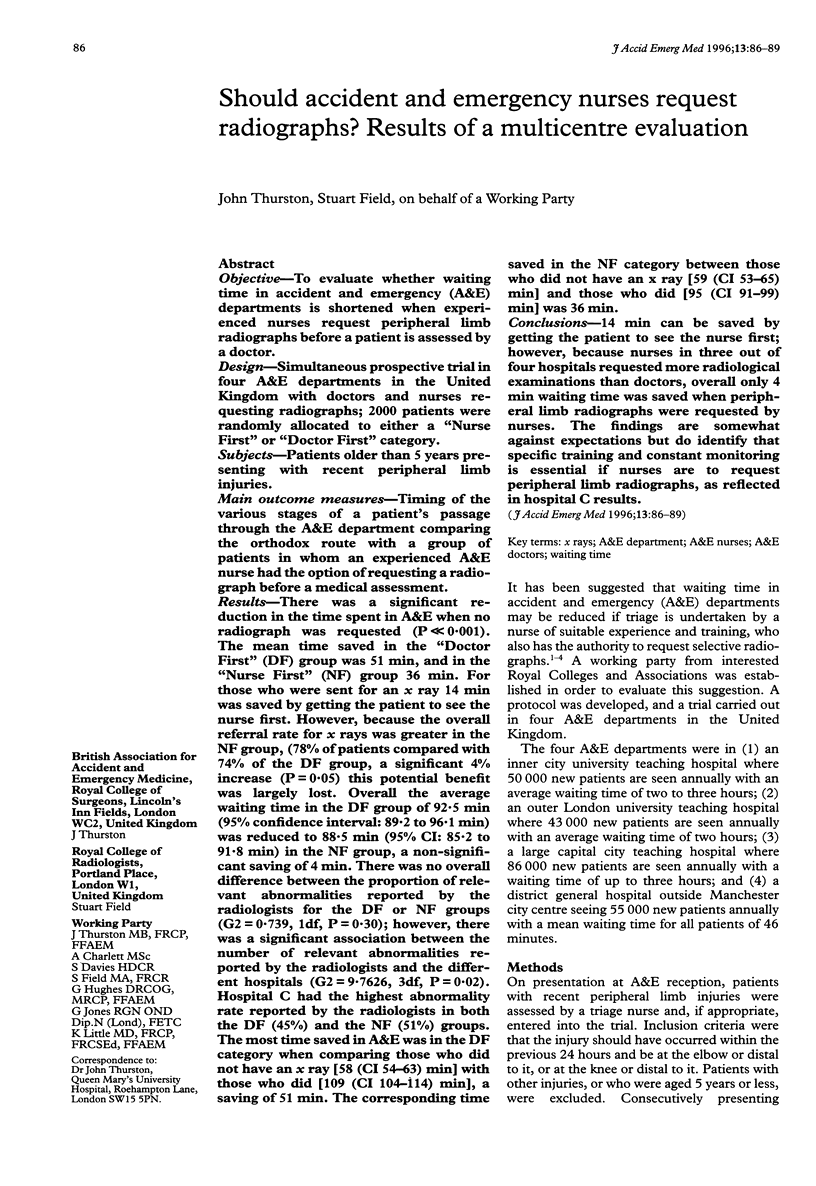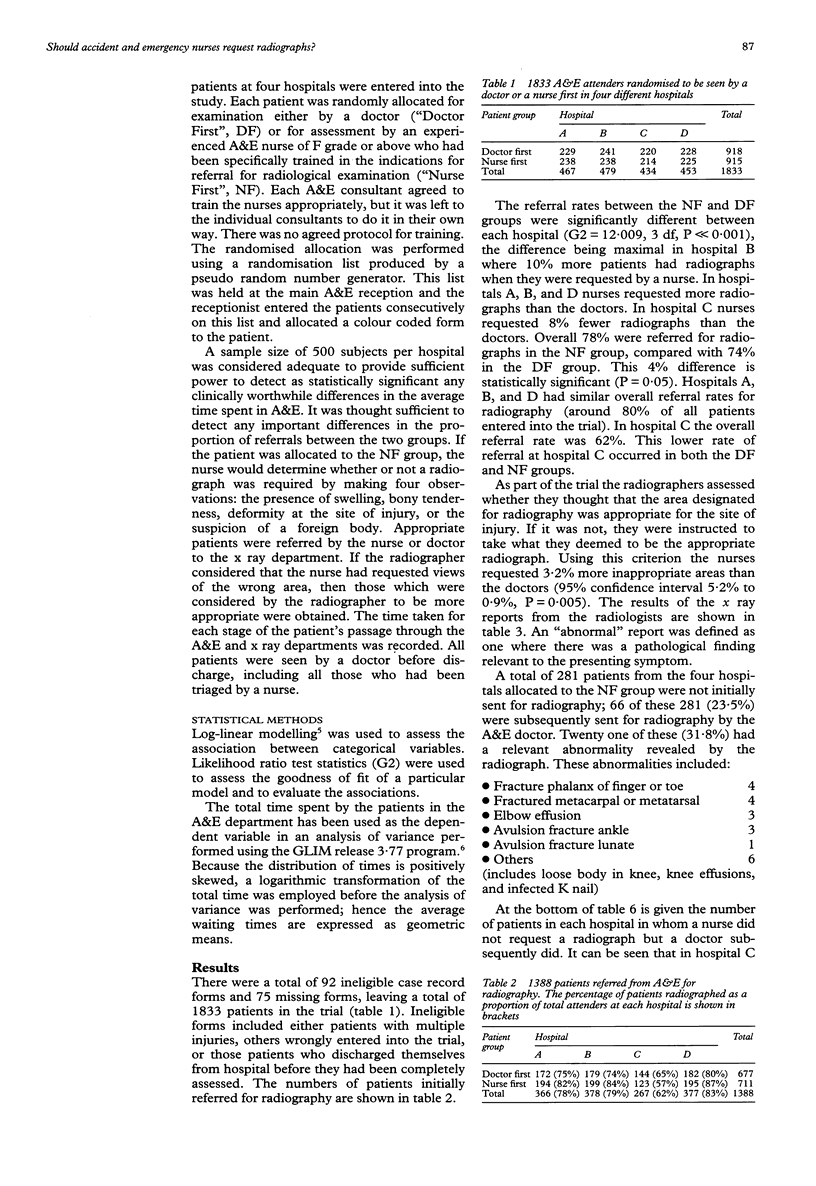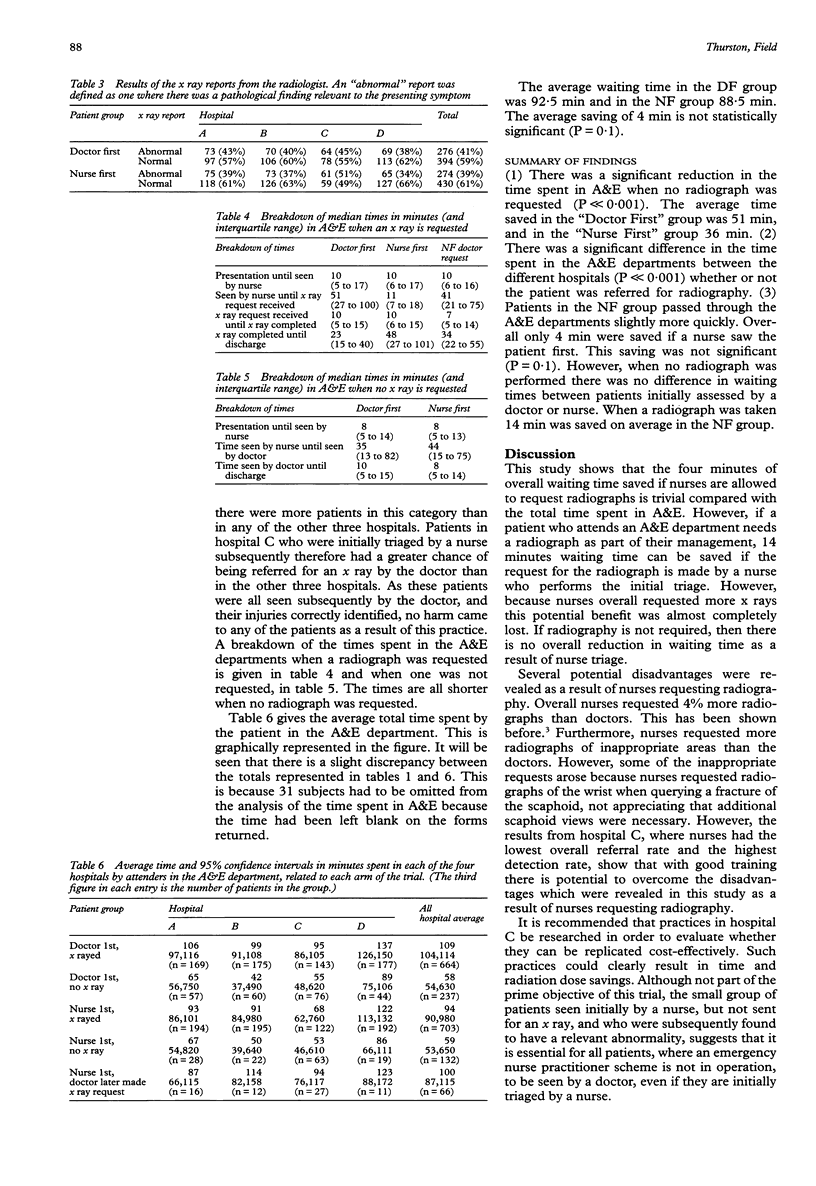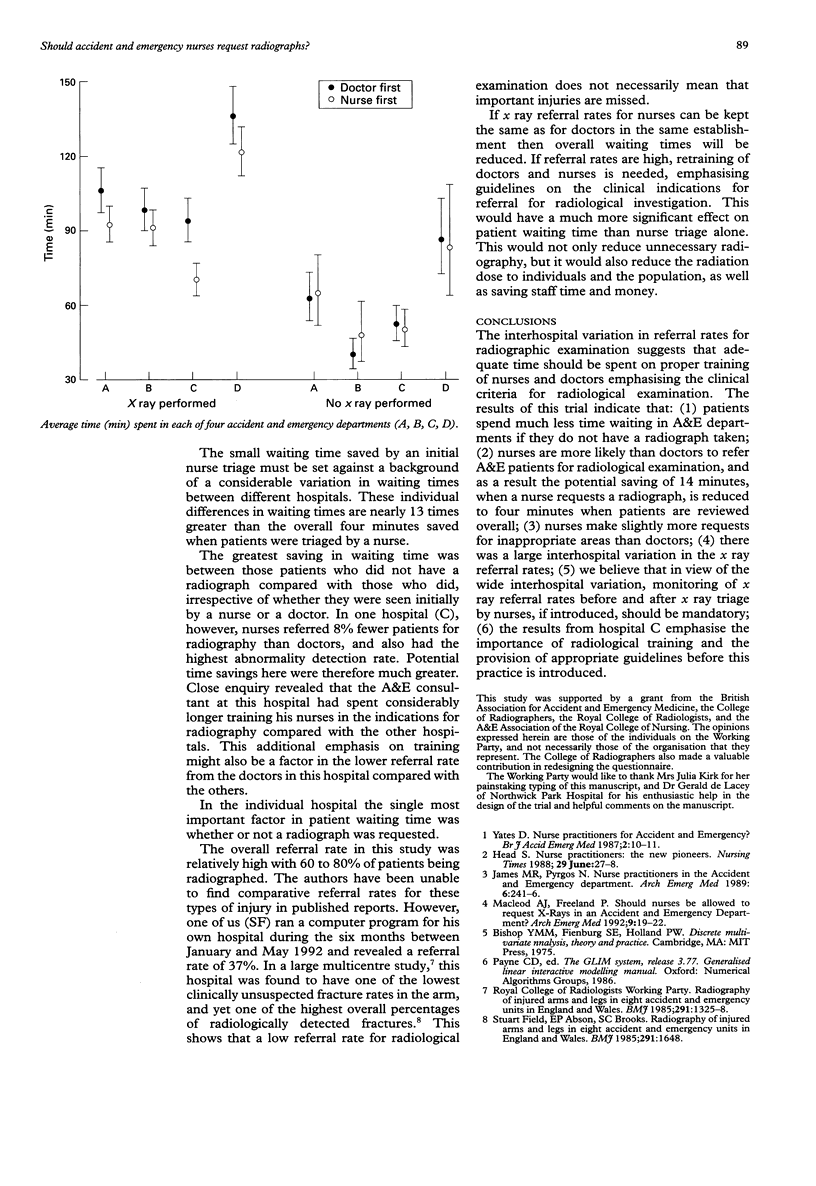Abstract
OBJECTIVE--To evaluate whether waiting time in accident and emergency (A&E) departments is shortened when experienced nurses request peripheral limb radiographs before a patient is assessed by a doctor. DESIGN--Simultaneous prospective trial in four A&E departments in the United Kingdom with doctors and nurses requesting radiographs; 2000 patients were randomly allocated to either a "Nurse First" or "Doctor First" category. SUBJECTS--Patients older than 5 years presenting with recent peripheral limb injuries. MAIN OUTCOME MEASURES--Timing of the various stages of a patient's passage through the A&E department comparing the orthodox route with a group of patients in whom an experienced A&E nurse had the option of requesting a radiograph before a medical assessment. RESULTS--There was a significant reduction in the time spent in A&E when no radiograph was requested (P << 0.001). The mean time saved in the "Doctor First" (DF) group was 51 min, and in the "Nurse First" (NF) group 36 min. For those who were sent for an x ray 14 min was saved by getting the patient to see the nurse first. However, because the overall referral rate for x rays was greater in the NF group, (78% of patients compared with 74% of the DF group, a significant 4% increase (P = 0.05) this potential benefit was largely lost. Overall the average waiting time in the DF group of 92.5 min (95% confidence interval: 89.2 to 96.1 min) was reduced to 88.5 min (95% CI:85.2 to 91.8 min) in the NF group, a non-significant saving of 4 min. There was no overall difference between the proportion of relevant abnormalities reported by the radiologists for the DF or NF groups (G2 = 0.739, 1df, P = 0.30); however, there was a significant association between the number of relevant abnormalities reported by the radiologists and the different hospitals (G2 = 9.7626, 3df, P = 0.02). Hospital C had the highest abnormality rate reported by the radiologists in both the DF (45%) and the NF (51%) groups. The most time saved in A&E was in the DF category when comparing those who did not have an x ray [58 (CI 54-63) min] with those who did [109 (CI 104-114) min], a saving of 51 min. The corresponding time saved in the NF category between those who did not have an x ray [59 (CI 53-65) min] and those who did [95 (CI 91-99) min] was 36 min. CONCLUSIONS--14 min can be saved by getting the patient to see the nurse first; however, because nurses in three out of four hospitals requested more radiological examinations than doctors, overall only 4 min waiting time was saved when peripheral limb radiographs were requested by nurses. The findings are somewhat against expectations but do identify that specific training and constant monitoring is essential if nurses are to request peripheral limb radiographs, as reflected in hospital C results.
Full text
PDF



Selected References
These references are in PubMed. This may not be the complete list of references from this article.
- James M. R., Pyrgos N. Nurse practitioners in the accident and emergency department. Arch Emerg Med. 1989 Dec;6(4):241–246. doi: 10.1136/emj.6.4.241. [DOI] [PMC free article] [PubMed] [Google Scholar]
- Macleod A. J., Freeland P. Should nurses be allowed to request X-rays in an accident & emergency department? Arch Emerg Med. 1992 Mar;9(1):19–22. doi: 10.1136/emj.9.1.19. [DOI] [PMC free article] [PubMed] [Google Scholar]


